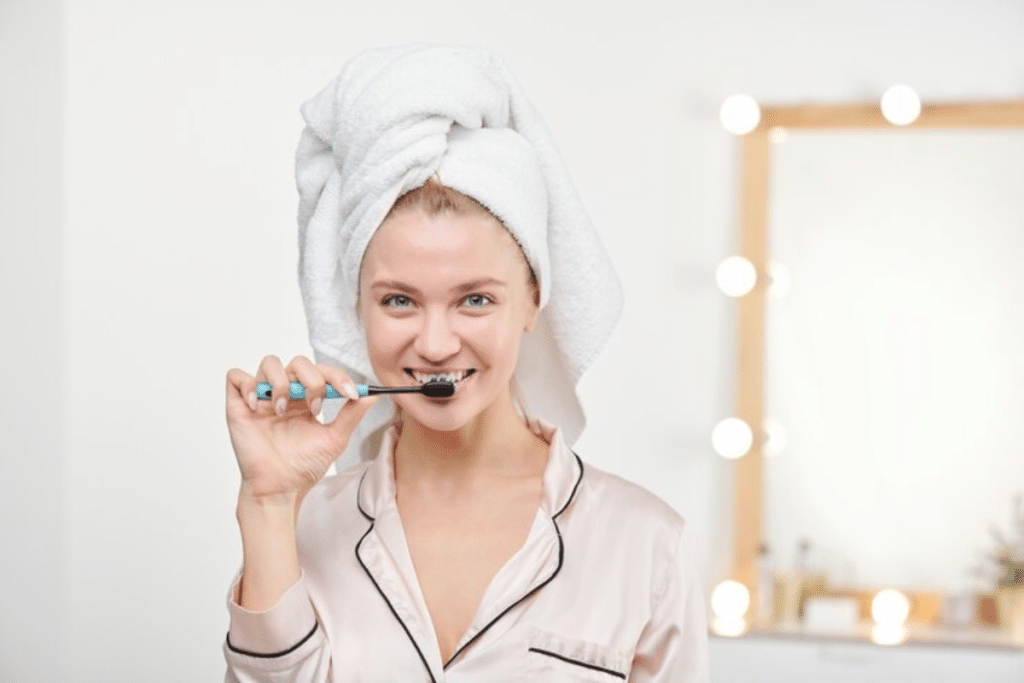Are you curious about the best practices for maintaining that dazzling smile after using whitening strips? Using whitening strips is a popular method to achieve brighter teeth at home, but how you care for your teeth afterward can impact the results.
Understanding the proper post-use care is crucial to maximize the benefits of whitening treatments while safeguarding your oral health.
Whitening strips work by applying a peroxide-based gel directly to the teeth, effectively bleaching away stains. After completing a whitening session, many wonder whether brushing immediately is beneficial or if it could potentially harm the newly whitened enamel.
This blog explores the considerations and recommendations for maintaining oral hygiene after using whitening strips, aiming to provide clarity on how to preserve and enhance your smile effectively.
What Are Teeth Whitening Strips?
Teeth whitening strips are thin, flexible plastic strips coated with a whitening gel containing hydrogen peroxide or carbamide peroxide. They are designed for at-home use to help brighten teeth by bleaching away surface stains and discoloration.
How Do Whitening Strips Work?
Here’s how whitening strips work:
- Application: The strips are applied directly onto the teeth and conform to their shape, ensuring even distribution of the whitening gel.
- Bleaching Action: The active ingredient in the gel penetrates the enamel to break down stains. Hydrogen peroxide or carbamide peroxide reacts with the molecules, causing discoloration and altering their chemical structure to reduce their color intensity.
- Duration: Typically worn for 30 minutes to an hour per day over a period of one to two weeks, depending on the brand and concentration of the whitening agent.
- Results: Over the treatment period, teeth gradually become lighter, resulting in a brighter and more vibrant smile.
- Safety: When used as directed, whitening strips are generally safe, though they may cause temporary tooth sensitivity or gum irritation in some individuals.

Should You Brush Your Teeth After Using Whitening Strips?
After using whitening strips, it’s common to wonder about the best practices for oral care to maintain and maximize the effects of the treatment. Here’s what you need to know about brushing your teeth after using whitening strips and other recommended oral care practices:
Brushing After Whitening Strips
It’s generally recommended to wait at least 30 minutes after using whitening strips before brushing your teeth. This allows the whitening agents to settle and continue their work without interference. Brushing immediately after using whitening strips could potentially brush away the whitening gel before it has fully penetrated the enamel.
- Use a Soft-Bristled Toothbrush: Opt for a soft-bristled toothbrush to minimize the risk of damaging the enamel or causing gum irritation, especially after whitening treatment when teeth may be more sensitive.
- Avoid Abrasive Toothpaste: Choose a toothpaste that is gentle and non-abrasive to protect the enamel and maintain the results of the whitening treatment. Look for toothpaste with fluoride to help strengthen enamel and prevent cavities.
Other Recommended Oral Care Practices
- Floss Daily: Flossing is crucial for removing plaque and debris from between teeth and along the gum line, where stains can accumulate. Regular flossing helps maintain oral hygiene and complements the effects of whitening strips.
- Limit Staining Foods and Beverages: To prolong the results of whitening treatment, minimize the consumption of foods and beverages known to stain teeth, such as coffee, tea, red wine, and berries. If consumed, rinse your mouth with water afterward or brush your teeth if possible.
- Regular Dental Check-ups: Schedule regular dental visits for professional cleanings and oral examinations. Your dentist can monitor your oral health, assess the effectiveness of whitening treatments, and recommend additional care if needed.
FAQs About Whitening Strips
Here are answers to some common questions and misconceptions about whitening strips:
Do whitening strips really work?
Yes, whitening strips are effective for removing surface stains from teeth. They contain hydrogen peroxide or carbamide peroxide, which bleaches the enamel and improves tooth color.
Are whitening strips safe to use?
When used according to the manufacturer’s instructions, whitening strips are generally safe. However, they can cause temporary tooth sensitivity or gum irritation in some individuals. It’s essential to follow usage guidelines and avoid overusing them.
How long does it take to see results with whitening strips?
Most whitening strips provide noticeable results within a few days to a couple of weeks, depending on the product’s strength and frequency of use.
Can whitening strips damage tooth enamel?
Whitening strips, when used correctly, should not damage enamel. However, prolonged or excessive use can lead to sensitivity and affect enamel health. It’s crucial to use them as directed.
How often should I use whitening strips?
Usage frequency varies by product. Typically, daily use for a specified duration (e.g., 30 minutes to 1 hour) over a week or two is recommended. Avoid using them more frequently than instructed to prevent sensitivity or gum irritation.
Can whitening strips whiten fillings or crowns?
Whitening strips primarily whiten natural teeth. They may not change the color of dental restorations like fillings, crowns, or veneers. Consult your dentist for advice on maintaining consistent tooth color.
Are there any side effects of using whitening strips?
Common side effects include temporary tooth sensitivity and gum irritation. These usually resolve once treatment is discontinued or by spacing out applications.
Incorporating whitening strips into your oral care routine can enhance your smile’s brightness effectively. Remember to follow recommended usage guidelines to avoid sensitivity and achieve optimal results without compromising your dental health.




